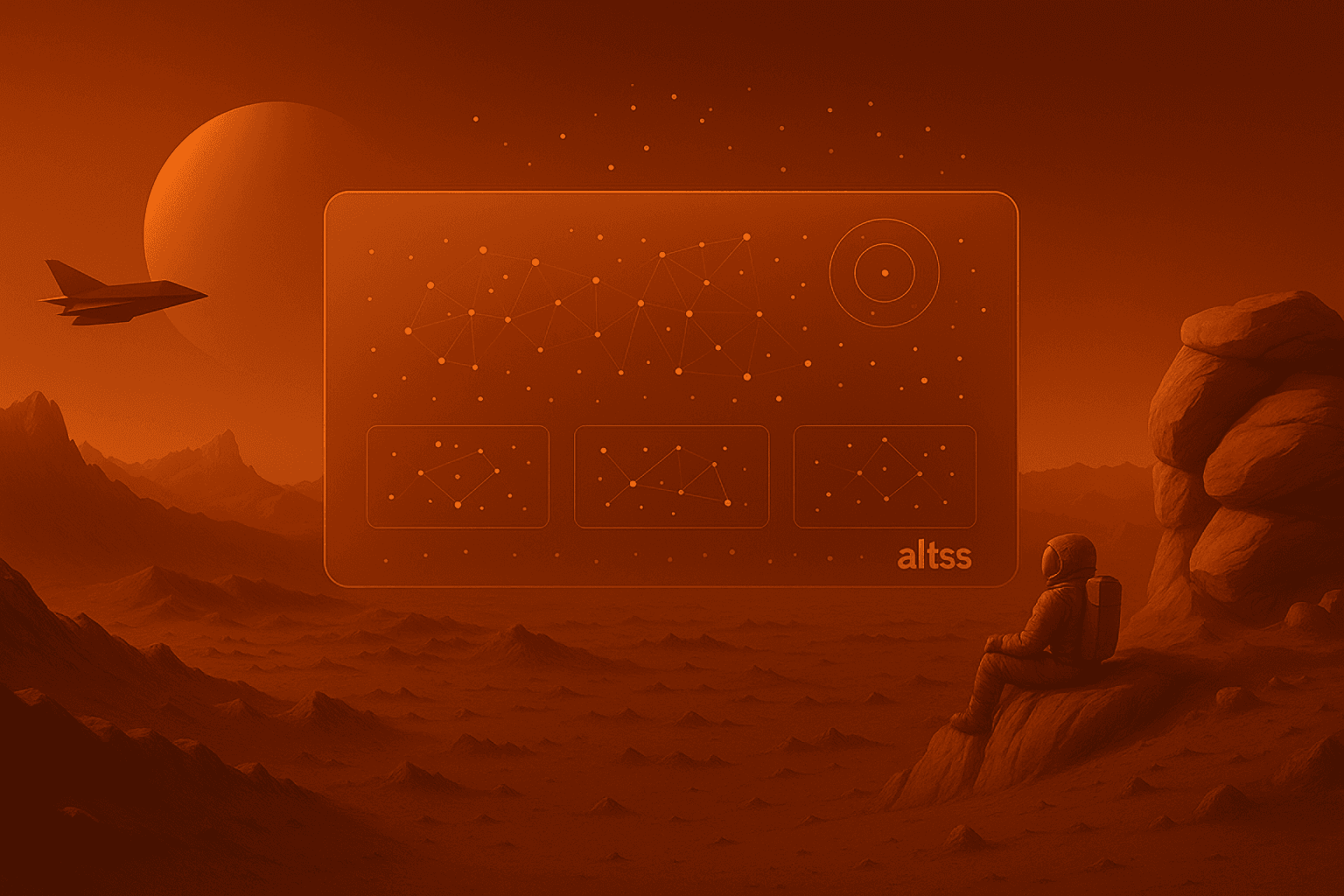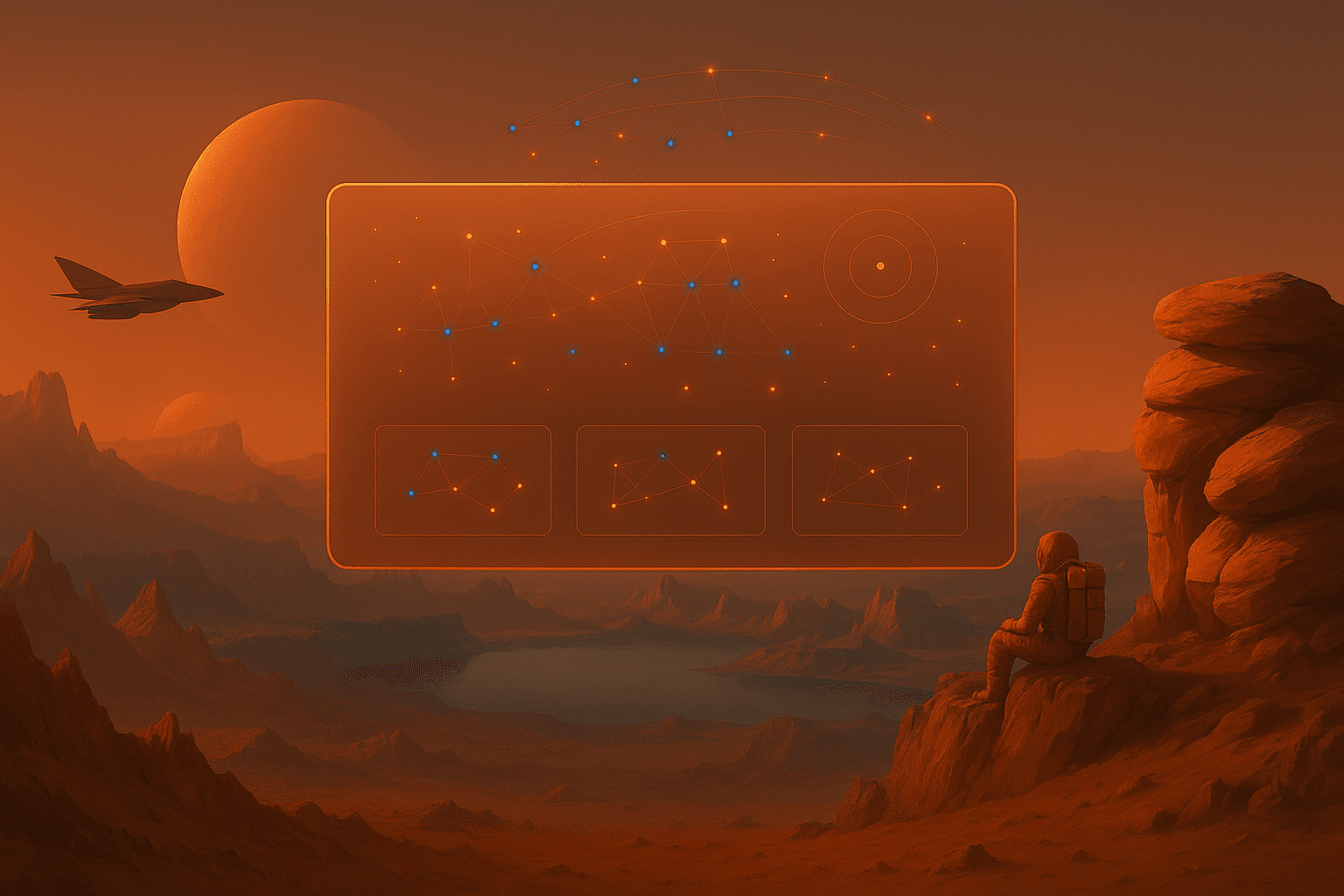5 Reasons GPs Are Leaving Legacy LP Databases for Altss
In the 2025 fundraising arena, speed isn’t optional—it’s survival. Investor-relations teams, independent sponsors, and managers from seed-stage to multi-billion AUM all need to know who is allocating, when, and how—before the rest of the market catches on. Legacy platforms still behave like 2005 directories. Altss is built on 2025/26, agentic-AI technology—turning live OSINT signals into meetings, not spreadsheets.

5 Reasons GPs Are Leaving Legacy LP Databases for Altss
Why this shift is happening now
Three forces define 2025/26 fundraising:
- Precision: You win by engaging LPs that actually write your check size today—especially family offices and flexible sleeves that move fast.
- Timing: Reply rates spike around visible motion (new partners, vehicle addenda, exits, event presence). If you learn five weeks late, you already lost the slot.
- Trust: Deliverability, verification, and PII governance are diligence topics, not IT footnotes.
Most legacy tools—PitchBook, Preqin, FINTRX, Dakota—were engineered for research cycles, dashboards, and exports. They deliver partial coverage, lagged updates, and manual work. In an agentic-AI world, that’s a tax on your calendar.
Altss is the opposite architecture: live, OSINT-native ingestion; ≤30-day re-verification on contacts; evidence surfaces you can cite in 90 seconds; Fit/Timing scoring; and a compliance posture designed for modern LP scrutiny. It already includes 9,000+ verified family-office profiles and a broad LP universe; full LP coverage across pensions, endowments, foundations, insurers, sovereigns, FoFs, RIAs/private-wealth allocators is rolling out next quarter.
Below are the five practical reasons teams are switching—and how to implement the change in two weeks.
1) Live, OSINT-Powered Data (Not Quarterly Snapshots)
Why it matters
Fundraising decisions are made on week-scale signals. Outdated profiles tell you who existed—not who’s moving. That gap burns time, damages deliverability, and deflates reply rates.
How Altss wins
- Agentic ingestion: Continuous OSINT pipelines digest regulatory filings, press, personnel moves, portfolio/vehicle events, and event rosters.
- Signal Timelines: Every allocator profile carries recent, citable motion—so your opener is specific, verifiable, and timely.
- ≤30-day re-verification: Decision-maker channels are re-checked and bounce-tested on a strict cadence; any bounce is replaced. Teams that maintain healthy warm-up and cadence consistently see high-90s deliverability (Altss backs a 99.7% deliverability commitment with record replacement).
What others do
- Preqin / PitchBook: Excellent for historicals and benchmarking, but refresh cycles are slower and intent signals are limited.
- FINTRX / Dakota: Heavier reliance on manual entry and batch updates; gaps open quickly when teams move fast.
Net: Fresh data daily, not batch uploads weeks behind the market.
2) Allocation Signals & Intent—Modeled for Outreach
Why it matters
By the time a commitment is public, it’s already done. Your edge is knowing who’s warming up—and why—before the announcement.
How Altss wins
- Forward-looking cues: Hiring bursts, new sleeves, allocator quotes, portfolio rotations, RFP hints, and thematic news are normalized into a single timeline.
- Queries that match how you work: “Show U.S. family offices exploring AI infrastructure or energy transition since March that have written checks under $25M.”
- Alerts that matter: Pings when an LP hires a relevant operator, reopens a sleeve, or signals first-time GP interest.
What others do
- PitchBook / Preqin: Backward-looking deal and fund data are useful for context, not for timing outreach.
- FINTRX / Dakota: Reactive input; little to no predictive signal detection.
Net: Altss tracks intent, not just history—so you email fewer people and book more meetings.
3) Relationship Intelligence (Q4 2025): Warm Paths, Not Cold Lists
Why it matters
You don’t raise from a spreadsheet. You raise through introductions, credibility, and proximity.
How Altss wins
- Relationship Graph (rolling out Q4): An interactive, agentic network shows how LPs, GPs, co-investors, boards, and advisors interconnect.
- Warm-path scoring: The platform ranks plausible intro paths so partners ask for the right door-openers.
- Events Radar: Align nudges and walk-ups with where the right people will be—matched to your shortlist.
What others do
- PitchBook: Partial mapping via co-invests; little social/board context.
- Preqin / FINTRX / Dakota: Minimal or no relationship-graphing; contact lists without pathfinding.
Net: Altss turns “who do we know?” from lore into a workflow.
4) Compliance-First, Deliverability-Safe: No Exports. No API.
Why it matters
CSV sprawl and bulk syncs create contact burnout and PII risk. In 2025/26, governance is part of your brand—and part of LP diligence.
How Altss wins
- In-platform only: You search, segment, take notes, and track engagement in Altss—without dumping raw PII.
- Provenance on insights: Timestamps and source lineage travel with context, making audits and counsel reviews short and calm.
- Deliverability moat: By design, Altss prevents mass-blast behavior that trashes sender reputation—protecting every client’s inbox placement.
What others do
- Legacy tools: Built for exports and “sync to CRM,” which invites over-messaging, staleness, and domain damage.
- Result: More cleanup, worse replies, harder compliance.
Net: Altss removes the friction between data and action without creating risk.
5) Coverage That Matches Reality: Full LP Map + 9,000+ Family Offices
Why it matters
Sub-$500M raises and most sponsor deals close with hybrid stacks: family offices, FoFs, insurers with smaller sleeves, targeted endowments/foundations—and occasionally RIAs/private banks. If your platform knows pensions but misses private wealth (or has poor FO contacts), your calendar suffers.
How Altss wins
- Today: Deep private-wealth and institutional coverage with 9,000+ verified family-office profiles and 1.5M+ LP contacts, continuously refreshed.
- Next quarter: Full LP coverage—pensions, endowments, foundations, insurers, sovereigns, FoFs, RIAs/private-wealth—unified under one signal model.
- Built for fundraisers: Filters for check size, GP-less receptivity, co-invest appetite, strategy, geography, activity window; Fit/Timing scores rank where to act this week.
What others do
- Preqin / PitchBook: Stronger on institutional research; thinner on FO depth and verified decision-maker channels.
- FINTRX / Dakota: Better FO visibility than the old guard, but still manual refresh bottlenecks and little intent modeling.
Net: Altss gives you the whole allocator map in one mental model—so your outreach is consistent across channels.
Who’s switching (anonymized field note)
A large, exchange-listed real estate manager ran a sector raise that depended on family-office participation. Their legacy dataset repeatedly produced FO bounces and missing principals, forcing manual verification and dragging sender reputation. After a short pilot, the team transitioned discovery and outreach to Altss. Bounces dropped materially, first-meeting velocity improved, and the workflow shifted from “export & repair” to signal → opener → meeting. The deciding factor wasn’t logo lists—it was the ability to demonstrate fit + timing with verified contacts.
Implementation: A Two-Week Switch Plan
Days 1–2 — Define the lane, build the shortlist
- Lock check size, sector/theme, geo, control vs. co-invest posture.
- Generate a 40–60 account shortlist in Altss with Fit/Timing scores.
- For each account, capture two timeline signals you can cite.
Days 3–5 — Send evidence-led openers
- 90-second emails: one line on fit, two concrete reasons why now, one explicit next step.
- Protect domain health (measured cadence, warm senders, template rotation).
- Book 15–20 minute calls; don’t ask for an hour on first contact.
Days 6–9 — Qualify, prune, and deepen
- Remove segments that under-convert; double-down on look-alikes that reply.
- Add a one-pager of operator math (integration, cash conversion, downside protection) to strengthen second touches.
Days 10–14 — Convert signals to meetings
- Time nudges to Events Radar and known committee windows.
- Use the Relationship Graph to route warm intros where possible.
- Share a two-page pack: Page 1 facts (pacing, realized/unrealized, pipeline, risks); Page 2 narrative (what changed, what you did, what you need—co-invest pre-clear, reference, or intro).
Sane KPIs
- Reply rate on evidence-led opens: high single- to low double-digits
- First-meeting conversion on qualified targets: ≥25%
- Bounces/spam trend: down (domain health rising)
- Days-to-calendar: shrinking week over week
Segment Playbooks (quick hits)
Startups (Seed → Growth)
- Use Fit/Timing to find angels, micro-VCs, and FOs aligned to your thesis and check size.
- Two-signal openers (“added infra partner in June” + “speaking on power/cooling panel last week”) outperform generic “we’re raising” emails.
Independent Sponsors
- Filter for GP-less receptivity, co-invest appetite, prior deal posture, and regional focus.
- Map warm paths via the Relationship Graph and time outreach to event presence; sponsors routinely halve LP-sourcing cycles by replacing lists with signals.
Emerging & Mid-Market GPs (Sub-$500M)
- Stop chasing mega-allocators with $25–$50M ticket gravity; prioritize FOs, FoFs, insurer sleeves, and smaller endowments/foundations that write $500k–$25M.
- Altss timelines reveal when those sleeves reopen—email that week, not next quarter.
Global Managers ($B+ AUM)
- Standardize on a single signal model across LP classes and private wealth.
- Use in-platform workflows to avoid PII egress; pair with enterprise tasking/notes connectors rather than bulk syncs.
Buyer’s Checklist (evaluate any platform in 10 minutes)
Timing, not just search: “Show 10 named LPs and what changed in the last 60 days—inside the product.”
Verification chain: Explain the ≤30-day cadence, bounce remediation, and business vs. personal channel handling.
Behavioral depth: Can you see product usage, sleeve re-opens, operator hires, and event presence—or just firmographics?
Governance posture: Export controls, provenance, PII separation—can counsel sign off in one meeting?
Sprint ROI: 40 targets → two signals each → 90-second openers. Judge on meetings, not dashboards.
FAQs (fast, candid)
Is Altss only for family offices?
No. Family-office depth is a signature strength (9,000+ verified profiles), but full LP coverage across pensions, endowments, foundations, insurers, sovereigns, FoFs, and RIAs/private-wealth rolls out next quarter.
Do you integrate with CRMs if there are no exports?
Altss supports workflow bridges (tasks, notes, calendar hooks) and enterprise connectors designed to avoid raw PII egress. You get context where you work—without CSV risk.
Can Altss replace our institutional almanac?
If you need deep performance histories and vintage benchmarking, keep the almanac. Use Altss for conversion: signals, fit, verified contacts, and warm paths.
What does it cost?
$15,500 per user, per year. All current features and continuous refresh included. Future modules (relationship graph, conference intelligence) may be optional add-ons.
Who shouldn’t buy Altss?
Placement agents, list brokers, or any team committed to export-and-blast outreach. Altss is built for direct owners and managers who value timing, evidence, and compliant workflows.
Plain-English contrast: legacy vs. Altss
- Snapshots → Signals
- Exports → Evidence-led actions
- Volume → Fit/Timing
- Cold lists → Warm paths
- 2005 directories → 2025/26 agentic-AI system
If your next 20 meetings decide your year, choose the platform designed to create them—with real-time OSINT, verified contacts, 9,000+ family offices today, and full LP coverage next quarter. That platform is Altss.
Related articles

Mukesh Ambani’s Family Office: Scale and Strategy in India’s New Capital Era (2025)
Mukesh Ambani’s family office sits at the center of Reliance’s legacy and India’s transformation. This 2025 profile explores its role as an allocator, its investment strategy, and implications for global fundraisers.

Global Single-Family Office Migration and Regional LP Activity Trends (2025)
A data-driven analysis of global family office migration and limited partner activity trends in 2025 across the U.S., Latin America, Asia-Pacific (Singapore), Dubai, and Europe. Explore how tax-driven moves (New York to Florida, UK to Spain), new SPV formations, digital-first “virtual” offices, and cross-border capital flows are reshaping the private capital landscape – and why real-time regional intelligence is now critical for fundraisers.